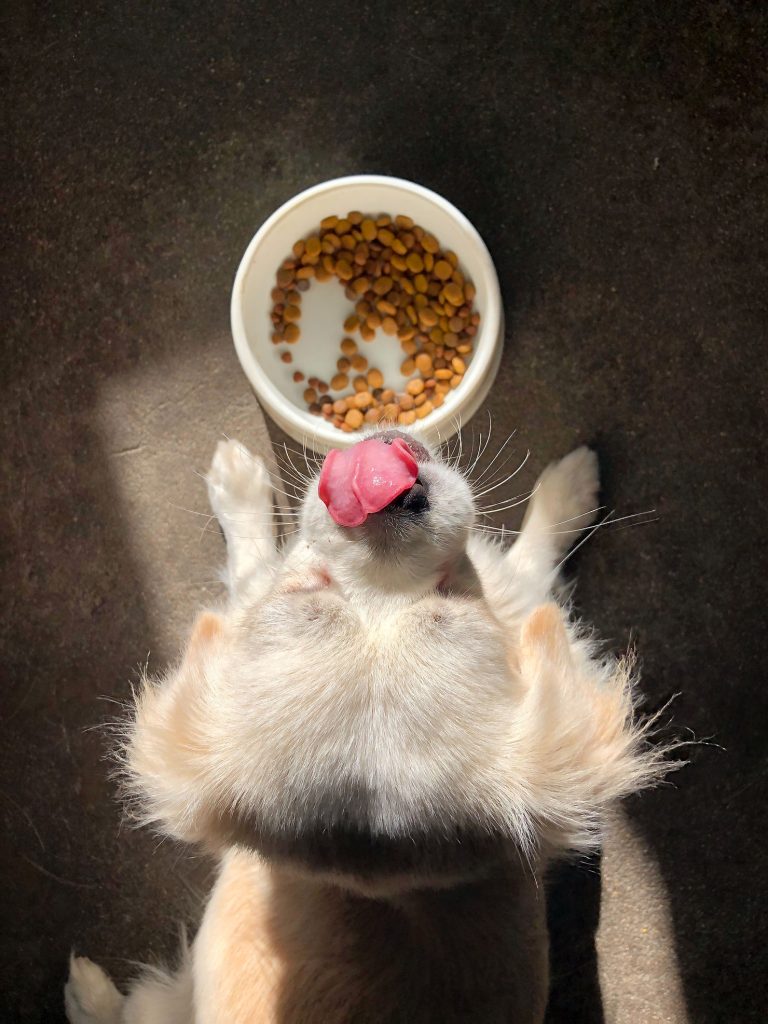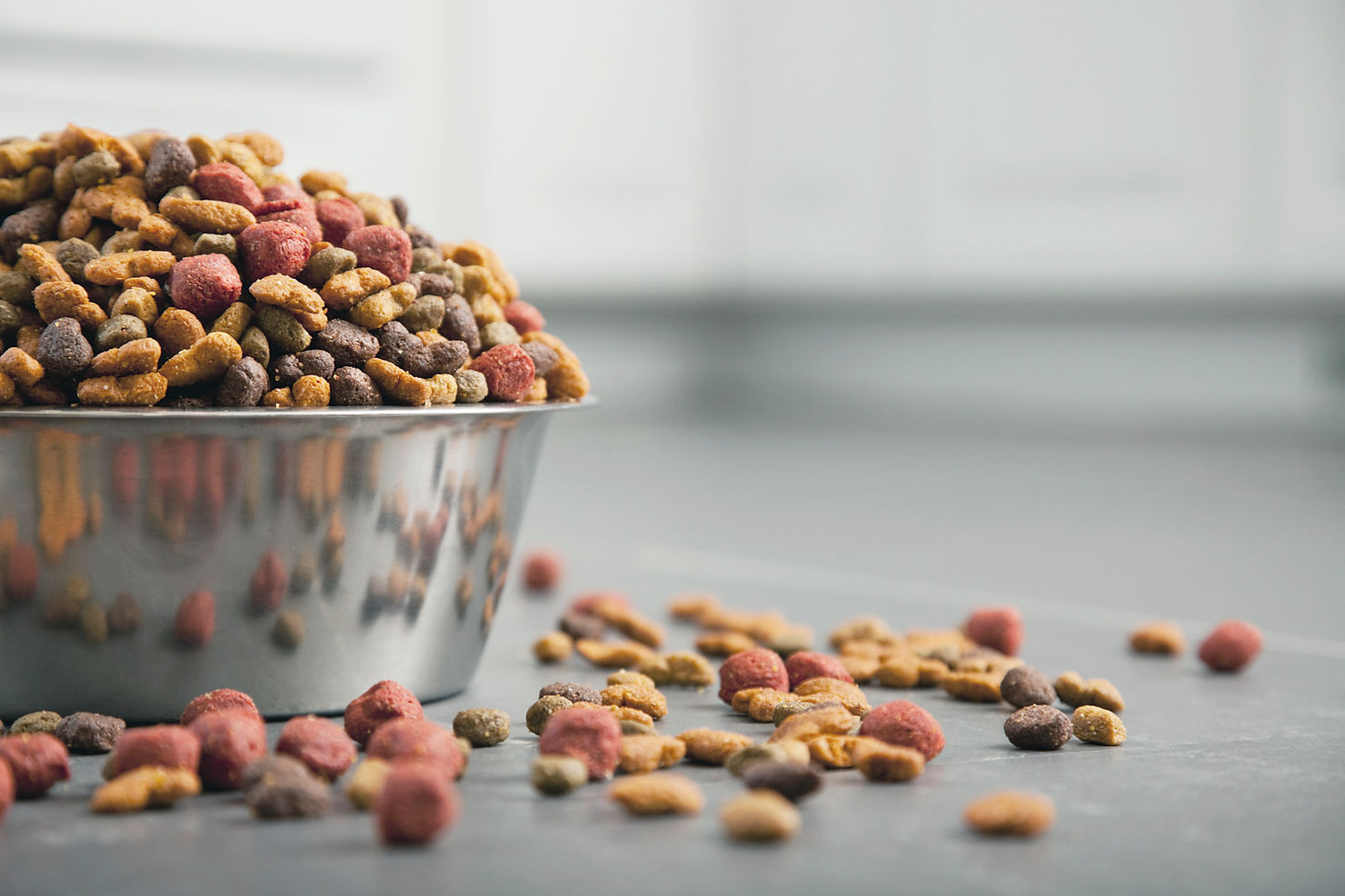Discover how dry pet food is made, the difference between baked and extruded kibble, and what science says about which method better preserves nutrients for your pet.
Introduction: Behind the Bag—How Kibble Is Really Made
Many pet owners focus on ingredients when choosing pet food—but few consider the cooking process. Yet how kibble is made can drastically affect its nutrient quality, digestibility, and even safety.
In this post, we’ll explore:
- What is extruded kibble vs. baked kibble?
- Does low-temperature baking preserve nutrients better?
- What does research say about cooking temperatures and pet health?
- What should you look for when choosing a dry food?
Let’s explore how kibble is cooked—and whether the “baked is better” claim holds up.
1. What Is Extruded Kibble?
Extrusion is the most common method used in commercial dry pet food production. The process involves:
- Mixing wet and dry ingredients
- Forcing them through a machine under high pressure and heat
- Cutting and shaping them into kibble
- Baking or drying the pieces
Pros:
- Cost-effective and scalable
- Allows for complex formulations
- Effectively destroys harmful pathogens
Cons:
- High temperatures (up to 400°F) may degrade heat-sensitive nutrients like certain amino acids and vitamins
- Requires use of added supplements to restore lost nutrition
2. What Is Low-Temperature Baked Kibble?
Baked kibble is prepared like a cookie or biscuit:
- Ingredients are mixed
- Dough is shaped and baked at lower temperatures (200–300°F)
Pros:
- Preserves more natural nutrients
- Denser, crunchier texture may improve dental health
- Some owners feel it’s more “natural”
Cons:
- More expensive to produce
- Shorter shelf life in some cases
- May not destroy all pathogens if poorly manufactured
Myth Check: Not all baked kibble is truly low-temp. Brands vary widely in baking conditions.
3. Is Baked Kibble Healthier?
Research comparing baked vs. extruded diets is still limited, but some findings include:
- Nutrient degradation is a concern in both methods
- Maillard reaction (protein-sugar binding) can reduce digestibility in high-heat extrusion
- Palatability tests show no consistent preference from pets
Conclusion: Baked kibble may preserve some nutrients better—but this doesn’t always translate to improved pet health if the formula isn’t balanced.
4. Ingredient Integrity: Does It Survive the Process?
Cooking methods can affect:
- Vitamin content (especially B vitamins and vitamin C)
- Protein structure
- Fat stability (oxidation risk increases with high temp)
Brands overcome this by:
- Adding post-extrusion vitamin packs
- Using stabilized fats and antioxidants
Whether baked or extruded, look for formulas with:
- AAFCO compliance
- Clearly listed supplements
- Proper fat preservation measures

5. What About Raw-Coated or Air-Dried Kibble?
To bridge the gap, some brands offer alternatives:
- Raw-coated kibble: Extruded base coated in freeze-dried raw
- Air-dried: Uses gentle dehydration at low temps over many hours
- Freeze-dried: Not kibble, but retains full raw nutrient profile
These options can:
- Preserve nutrients
- Increase palatability
- Come at a higher price
Note: These aren’t always complete & balanced diets—read the label!
6. Are Baked Foods Safer?
While extrusion is more reliable for destroying bacteria, properly managed baking can also be safe. What matters most is:
- Quality control at the facility
- Ingredient sourcing and cleanliness
- Clear cooking temperature disclosures
Brands that voluntarily provide food safety audits or use human-grade kitchens often offer higher safety assurance.
7. What Do Vets Recommend?
Veterinary nutritionists typically prioritize:
- Balance over processing method
- Digestibility and palatability
- Clinical data or feeding trials
Few board-certified vets insist on baked kibble. They’re more likely to recommend foods that:
- Are formulated by experts
- Meet AAFCO standards
- Have track records of health outcomes
8. Marketing vs. Manufacturing: Who Can You Trust?
Baked foods are sometimes marketed as artisanal or healthier, but be cautious:
- “Oven-baked” may just be a buzzword
- Ingredient quality still matters more
- Small brands may lack rigorous testing
Look for brands that are transparent about:
- Temperature ranges
- Batch testing
- Nutritional completeness
9. Price vs. Value
Baked foods tend to be pricier, but:
- Are you paying for marketing?
- Is your pet benefiting from better digestibility?
- Does the food meet your pet’s specific needs?
Sometimes a high-quality extruded diet may outperform a poorly formulated baked one.

Conclusion: Choose Quality First, Not Just Method
While baked kibble may preserve certain nutrients and appeal to natural-food enthusiasts, manufacturing method alone doesn’t determine food quality.
When choosing a kibble, prioritize:
- Ingredient transparency
- Balanced formulation
- Rigorous testing
- Veterinary approval
Whether baked, extruded, or air-dried, the best kibble is one that supports your pet’s energy, coat quality, digestion, and overall vitality.
About Transcon Pet Movers
At Transcon Pet, we go beyond just getting your pet from point A to B—we care deeply about their health and comfort. Whether you’re relocating internationally or across the country, we offer personalized travel planning, expert health certification, crate preparation, and customs clearance for dogs, cats, birds, reptiles, and more.
We know nutrition and stress management are vital parts of a successful journey. Trust our experienced team to treat your pet like family from doorstep to destination.
Contact us for professional help with international pet relocation today.

